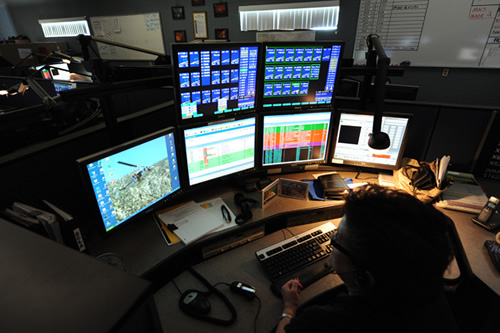The dispatch center plays a critical role in today’s delivery of emergency medical services. A call to a dispatch center puts into motion the activation of response agencies, early CPR, rapid defibrillation and ALS initiation, and a successful outcome relies on the good work of well-trained dispatchers with the technological tools to assist them.
A 2014 report in the Journal of Emergency Medical Services (jems.com) on data collection and use emphasizes how the dispatch center has evolved into a clinic hub. Dispatchers have acquired new responsibilities, including protocols for “hear and treat,” and “see and treat,” and being the first link in the Chain of Survival. Dispatchers also interact with other components of the health care community.
Data collected from the dispatch center give the opportunity for care to be driven by data instantaneously, through Computer Aided Dispatch (CAD) systems and software applications. Data systems can monitor dispatcher call-processing times, track unit locations and determine coverage gaps. Such systems can also be used to alert emergency medical services of early signs of a chemical, biologic, radioactive or nuclear attack.
Real-time data allows dispatchers to make educated decisions.
Once a 9-1-1 call is received, both the telephone number and address are given to the call-taker’s screen. Within 30 seconds, the call can be processed as life threatening, and this data transferred to the CAD, which then automatically populates the dispatch software. Many communication centers use FirstWatch software to monitor data from incoming calls that are entered into the CAD, along with software like PRoQA which provides structure dispatch protocols.
Many emergency medical services systems also use Automatic Vehicle Location (AVL) software to track vehicle location. The dispatcher also use mapping programs to show coverage, the best route for the vehicle or any obstacles that EMS may encounter, such as bridges, trains, or road work, and based on the time of day and the traffic. The dispatcher can relay the best route to the EMS crew, and in turn they can let the dispatchers know when they arrive on the scene of an emergency. The dispatcher can look at the real-time map to determine if any coverage gaps remain and where the next life threatening emergency may be, and can move the remaining available units in only seconds.
The diverse data sources and the uses of data in this new world allow the dispatcher to more effectively and efficiently do their jobs, and ultimately save lives.
Source: “Data Drives Care: How Data Collection and Use Saves Lives,” Journal of Emergency Medical Services, January 2014
Medtrust Medical Transport provides emergent and non-emergent ambulance services. We support patients and their families in Charleston, Myrtle Beach and Georgetown, South Carolina with expertly trained EMT personnel and a fleet of fully-equipped ambulances. Our goal is to provide compassionate and timely patient care.

